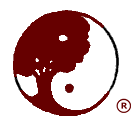|
|

 Japanese & American Research on Meridians & PointsBy Iona Marsaa Teeguarden, M.A., L.M.F.T., Jin Shin Do® Foundation Director
I think What are Meridians and Points? is the most important article I’ve written. It was in the 2006 Jin Shin Do® Networker and then was published in the fall 2006 issue of "Oriental Medicine" (a publication of the Pacific College of Oriental Medicine in San Diego, CA). A popularized version of that article is Jin Shin Do® Acupressure - Magic or Science? which was in Acupressure News in 2006.
While in Tokyo for 3 months in 1976, I met Katsusuke Serizawa, Sc.D., author of Tsubo – Vital Points for Oriental Therapy (1976, Japan Publications). I was fortunate to be able to give Dr. Serizawa a Jin Shin Do® session. He said it was the most similar to his Tusbo Therapy of anything he'd experienced. In Tsubo Therapy, points are mainly stimulated by pressing on them with the fingers or thumbs. Tsubo Therapy differs from many forms of Shiatsu in its emphasis on exact location of acu-points more than many other forms. Dr. Serizawa said that if treatment of the tsubo has no effect, “in most cases…..the person has been treating what he thought was the correct places without accurately locating the tsubo. Unless treatment is applied directly to the tsubo, effective therapy cannot be expected.” (p. 41, Tsubo – Vital Points for Oriental Therapy) Did you know that after World War II, General MacArthur abolished acupuncture in occupied Japan? One of MacArthur’s military doctors asked a blind acupuncturist to demonstrate his art. During the treatment, the blind acupuncturist held the head of a needle between his lips while locating a point. Although the head of the needle does not go in the body, this was considered unsanitary, so the U.S. outlawed acupuncture in Japan. This caused great concern, partly because acupuncture was a traditional trade of the blind. The Japanese response was brilliant. At the University of Tokyo School of Medicine, they researched not only the efficacy of acupuncture, but also why it works. In 1976, Dr. Serizawa gave me reports of research done by himself and colleagues in the Department of Physical Therapy and Medicine at the School of Medicine at the University of Tokyo. I mentioned this research in The Joy of Feeling: “Research has shown that the skin temperature at the acu-points is significantly different from that of the neighboring area–usually one-half to one degree Celsius higher. When stimulated, the acu-points show a ‘peculiar rise in skin temperature,’ which can last for about ten minutes. Research has also shown that there is a markedly decreased electrical resistance at these points – about 1/100 that of the surrounding area. This begins to confirm the traditional Oriental view that these are points of high energy concentration, or points which conduct energy, along pathways which are called meridians.” (pp. 22-23) “The acu-points can be described as points of energy concentration, or points which conduct energy along pathways called ‘meridians’ and ‘channels.’ This vital energy was called ’ch’i’ by the Chinese… It can be described as an electromagnetic energy which influences balance both in the body and in the psyche… Research in Japan has suggested that the meridians are located in interfascial spaces–spaces between the fibrous membranes which support and separate the muscles… [Also] Japanese researchers have hypothesized that the meridians are stimulated by muscular movement, or by the serial contraction of related muscles.” (p. 36) I also mentioned the Japanese research in "A Complete Guide to Acupressure" (p. 22, where I referred to an article I’d written called “Japanese Research on Acu-Points and Meridians” – which actually was a research summary; it was typewritten because we didn’t have personal computers in the seventies.) In my articles on research into the meridians and points, I referred to Arnie Lade, an acupuncturist in B.C. who wrote "Acupuncture Points: Images & Functions" (© 1989). I met Arnie when I was teaching in B.C. in the late nineties, and he asked me to write a blurb for the back cover of his new book, "Energetic Healing –Embracing the Life Force" (© 1998), chapter 7: "The Meridians, Qi and Fascia" is particularly fascinating. I contacted Arnie for permission to quote parts of it, and he told me about the research done by Helen Langevin, M.D. at the University of Vermont, whom I was able to contact. This American research is different from but validates the Japanese research. Copyright © 1999 - 2019 Jin Shin Do® Foundation. All rights reserved. |
|